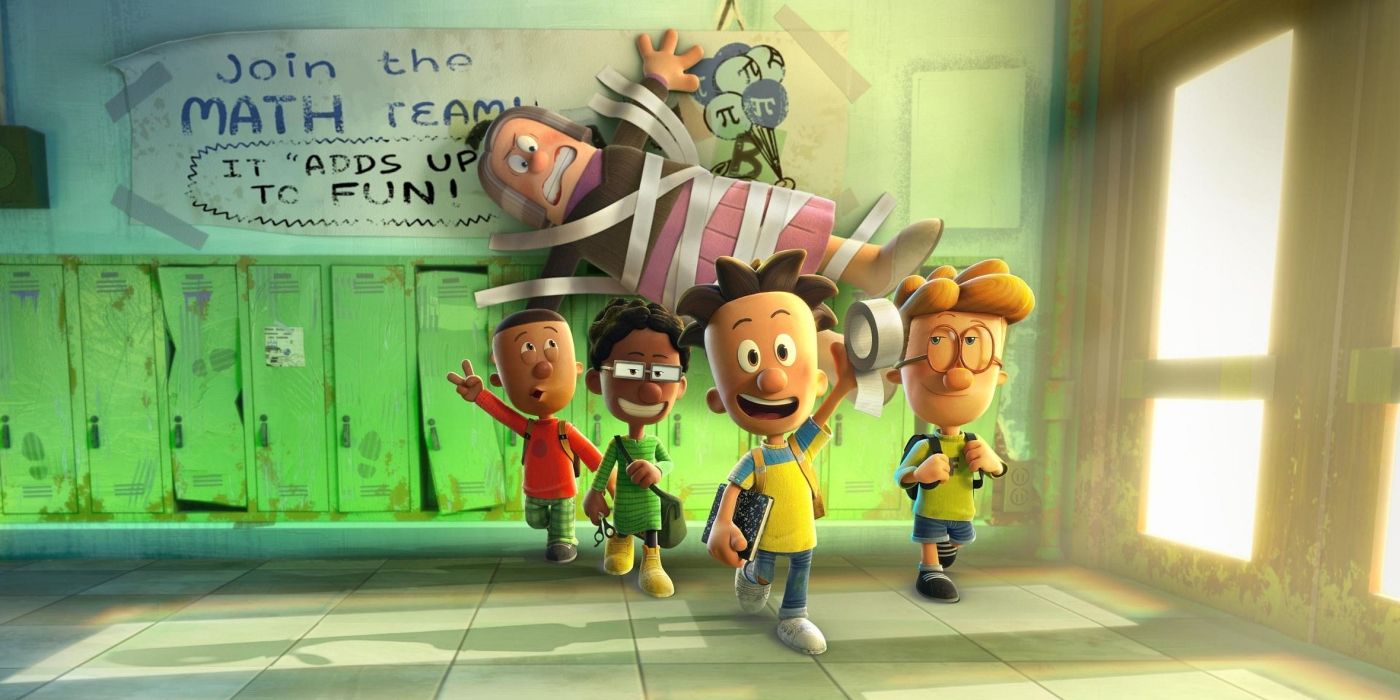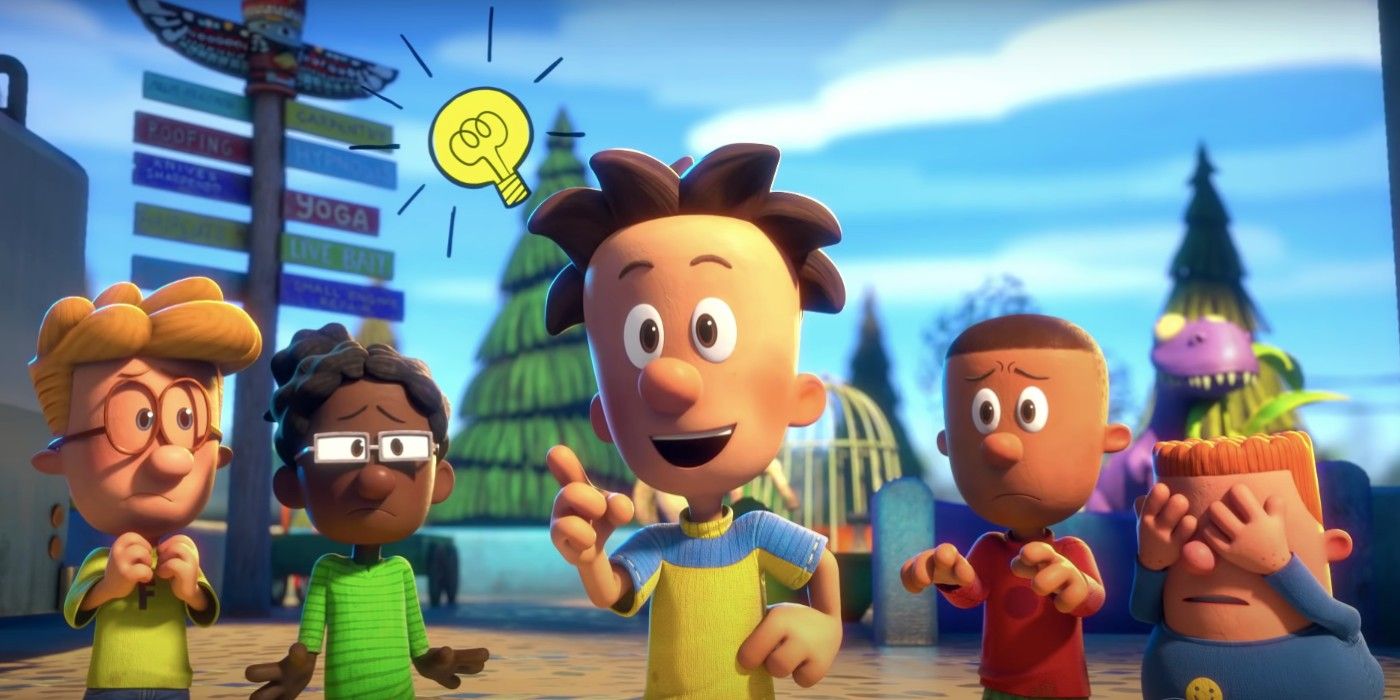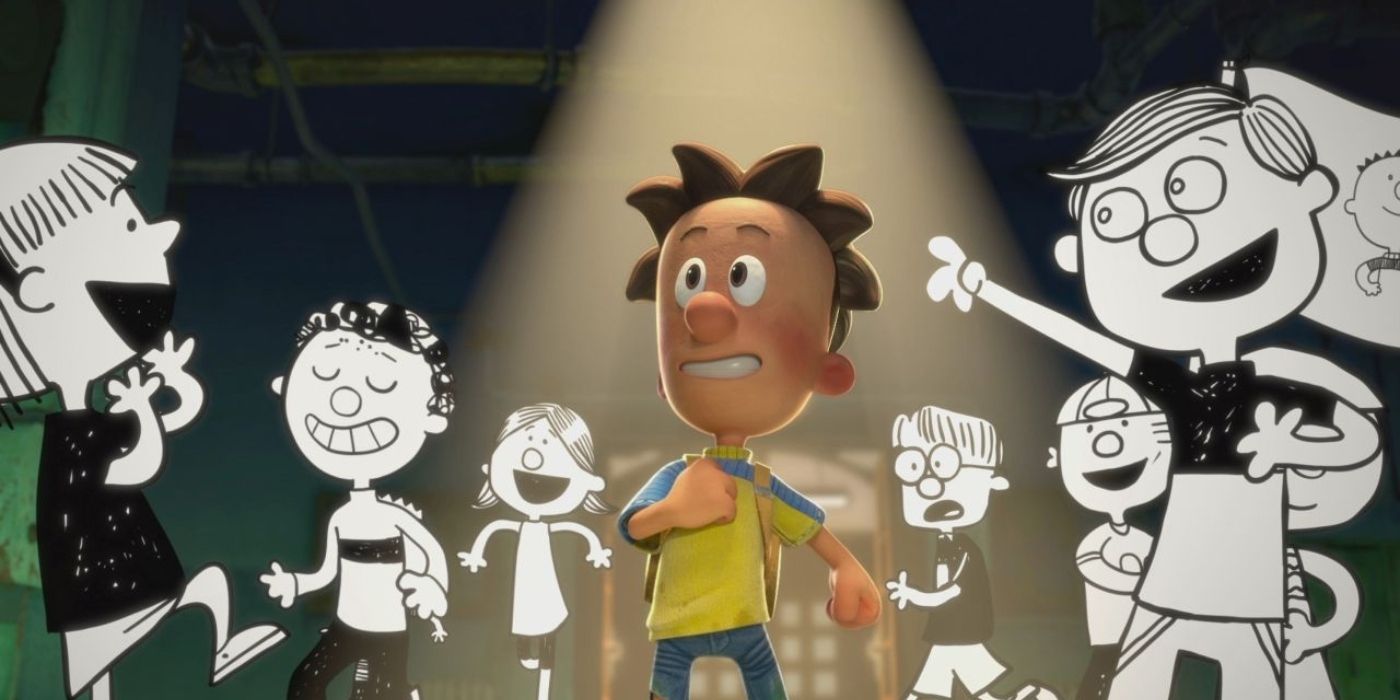Over 30 years after the title character debuted, Big Nate is finally making his way to the small screen. The Nickelodeon Animation Studios series focuses on Nate, his friends and his family as he tries to navigate the crumbling PS 38 while letting his imagination go wild. The character, who has previously starred in novels, activity books and even a musical, is finally making his animation debut. While the show creators are infusing the art design with a surprising amount of stylistic variety, the heart of the series remains Nate Wright, who carries over the same energetic-but-panicked energy he's always embodied.
During an exclusive interview with CBR ahead of Big Nate's Feb. 17 premiere on Paramount+, Big Nate Executive Producers Mitch Watson and John Cohen spoke about finding the perfect vulnerability for Nate, the origins of the show's mixed animation styles and the importance of highlighting just how grimy PS 38 really is.
CBR: Big Nate has been a fixture for over 30 years. There are generations of fans of this character and people have been trying to get Nate on screens pretty much since his inception. What does it mean to you guys, as creators, to get to shepherd that process?
John Cohen: I will tell you, it is such a thrill. We've loved this comic strip and these books for so long and what Lincoln created has this wide breadth of world-building, of characters and backstories. When you have characters who have existed for 31 years, that's a big chunk of my life, so they've got a lot of backstories and a lot of experiences. The chance to get to work in this world and, as Mitch and the team have been doing, to take it and to build upon it has been a dream.
Mitch Watson: Yeah, I have two daughters so I was sort of aware of Big Nate, but it wasn't until I came on board that they sent me the books and I really got into it. What I discovered, and what is nice when you're making a show, is that I don't have to resell it or anything. All I do is have to mention, "Hey, I'm working on this thing called Big Nate." I remember, I think the first time it happened, I was going for a tooth extraction and the woman at the desk asked me what I did and I told her. She said, "Oh, what are you working on?," and I said, "Big Nate." She goes, "Really?!" I mean, she just flipped.
That's been the consistent response all the way through. I have a 10-year-old daughter, and when she tells especially the little boys, the little girls in her school, they're just like, "What?!" No one can believe this thing is going to become a show. That has been extremely satisfying. I tell you, it raises the bar, too, for us not wanting to screw it up.
Nate Wright is a part of a long tradition of cartoon/comic characters but comes with an open level of vulnerability that really makes him stand out. Why is it important to highlight a character like Nate, especially in an era where younger audiences are growing up in unprecedented times?
Watson: The tricky thing about the character of Nate, as popular as he is... I think John and I talked about this at our very first meeting. You can read that character in a particular way and just think he's a jerk. He just does stuff to his teachers. He's always causing trouble. He's in detention. You can read him on the surface as that kind of character. What we tried to do in the pilot was to show that yeah, he's a kid who likes to cause a lot of trouble, but beneath that is this vulnerability and this insecurity. He just really wants people to like him. He wants people to see him in a particular way that maybe he really isn't, but in his mind he ultimately wants to be. We achieved that in the pilot by juxtaposing Nate against a kid who really is [that bad].
There's that one scene when Nate really sort of expresses himself, when he's sitting on the toilet, that you see a kid who like all kids just wants to fit in, you know? That's a key component, I think, whenever you're doing something like this. The insecurity and the vulnerability that goes along with being a kid, especially at that age... You don't know who you are yet. You haven't found your place in the world yet. You have an idea of what you want but you're not exactly sure how to achieve it. So I think that's the great thing, to me, about his character. That was sort of what we found. I don't think he's a jerk at all. Everybody who thought he was a jerk was only looking at his surface. I see a kid who just really wants to be accepted. He's just chosen a particularly different way of doing that.
Cohen: One thing that I connect to so much with [Nate], and with a number of the characters, is that they're all characters with artistic dreams, with pursuits that they have. In Nate's case, it's his drawing and his comics, and also his music, playing in a band. With DeeDee, it's performing arts. That for me is something that I can just relate to and I think a lot of us can relate to, because here you see these kids who really, really aspire to do these things that they're doing at this age. That's when most of us, when everyone really, is finding their personas and their artistic sensibilities and even just discovering a sense of who they want to be in life and where they want to head in their lives.
That's what I find fascinating. I think there is -- and this is based on Lincoln's creation and it's based on what Mitch and the entire team of writers and our design team have created -- there is such sophistication to the show, to these characters. The comedy lands for me in such a genuine way, where a lot of times when I read books and all kinds of material that are targeted to kids, I sometimes can appreciate it but I don't genuinely find it funny. In this case, Big Nate I find hysterically funny. The fact that I enjoy it as much as I do, and my eight-year-old and four-year-old do, is I think very promising.
I'd agree. There are a lot of layers of comedy sprinkled throughout the show, especially in terms of just how run-down the school itself is around Nate and the rest of the cast.
Watson: That was always one of the intentions, right from the get-go. When we talked about the show, wanting it to have a feeling of nostalgia... Which is sort of why it has that kind of Rankin/Bass look, which was really the one that I went to because those were the shows I loved as a kid. I loved the stop-motion feel of it. The school itself -- a lot of the shows that I've done in the past, I always try to find one thing to hook into that I can really sort of sink my teeth into in terms of commentary or whatever you want to call it, and [with Big Nate] it was the public school system because I was dealing with it at the time with my own daughters. Lincoln hit upon it in his books and I said, "I don't want to gloss over that. I want to take that on and run with it."
So when we designed PS 38, I mean if you look, just freeze-frame on anything, it looks like it's just falling apart. It's decaying. We designed the school, if you ever look at a straight-on master shot of the school, the middle is this sort of beautiful brick building that's about a hundred years old, and that was the original school. Then as more people moved into the area, more kids started coming to school, they began to build out. As they built out, they have less and less and less money. So if you look at it, it's pretty in the middle and as it goes out, it just gets crappier and crappier. In the back, when we show the playground, everything is broken. There are storage containers, wires everywhere. It was us wanting to say, "Look what we've done in the public school system. We've really, really shortchanged it."
We didn't want it to be like a lot of other shows you see in this kind of setting, which is glossy and they're pretty and they're all really bright and lit. We wanted to really dirty it up. That was one of my favorite notes to always give, as they would show me designs: "Yeah, that's really good, but it's too clean. I going to stick some mold in a corner or some water damage on the ceiling." That to me was more realistic, especially from what I was experiencing with my own kids in public school.
When I spoke with Big Nate creator Lincoln Peirce, one of the things he loved about the show was the way the animation can meld different mediums for different effects. It's typically CGI, but there are flights of fancy where it'll shift into 2D animation and times where it'll turn almost Monty Python-esque, like paper art. Where did that come from? When did that become a part of the show?
Watson: It was specifically so that we could just set parameters. We said, "Okay, the normal show will be CG," but we're shooting it on what they refer to as twos as opposed to one so it has that kind of stop-motion feel to it. David Skelly, our director, designed the characters and if you look closely at their skin textures, they almost looked like puppets. So there was that that we did. That was the first style, then we say, "Well, we have to have a style for when Nate goes into his own imagination. We'll actually use Lincoln's style for that stuff." So we use that 2D style whenever we go into Nate's imagination. Then we thought, "Okay, but if that's the parameter then for Nate, then nobody else can really go into that style on their own." So we thought, "Well, we have to have a third style then."
We actually have more than three, but we have the three main styles. We found this guy, his name is Sam Koji Hale and he is a master with this cut and paste art style. The way it works is very similar, if you know Monty Python, to the way they used to work with Terry Gilliam. We write it, we storyboard it and then we give the storyboards to Sam. Then Sam literally disappears for a couple of weeks and then comes back with this crazy animated sequence that goes with it and then we make our tweaks or whatnot.
Cohen: It is done first and foremost from a stylistic perspective. I will just add to that that this look of the show was entirely created and originated by Mitch. Mitch had the idea to do this and from the very beginning said, "Let's do something very different. Let's do something that feels tactile and distinct." Mitch working with David Skelly, our Art Director, and Sam Koji, our Associate Art Director, have created something that is unlike any animated show I've ever seen or that is even out there right now. The mixed media, all kinds of animation styles -- it's extraordinary. It's something that I think is striking. It adds so much to the unique qualities of the show but it also adds so much to the comedy of the show.
Catch Big Nate's animated debut on Paramount+ on Feb. 17.



